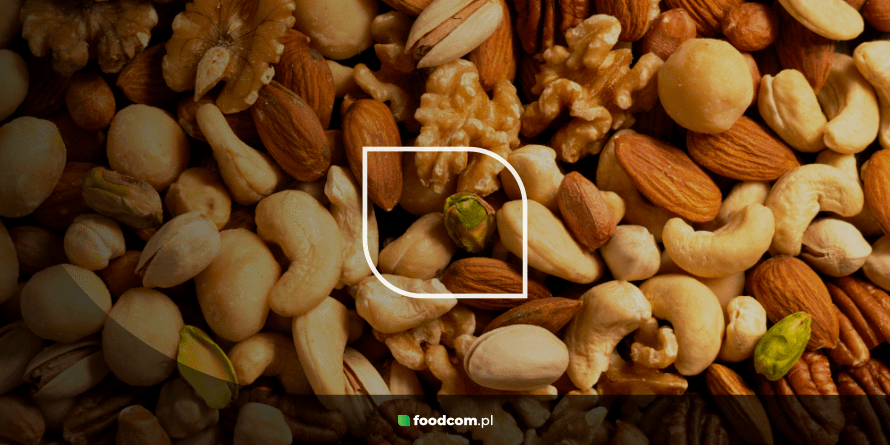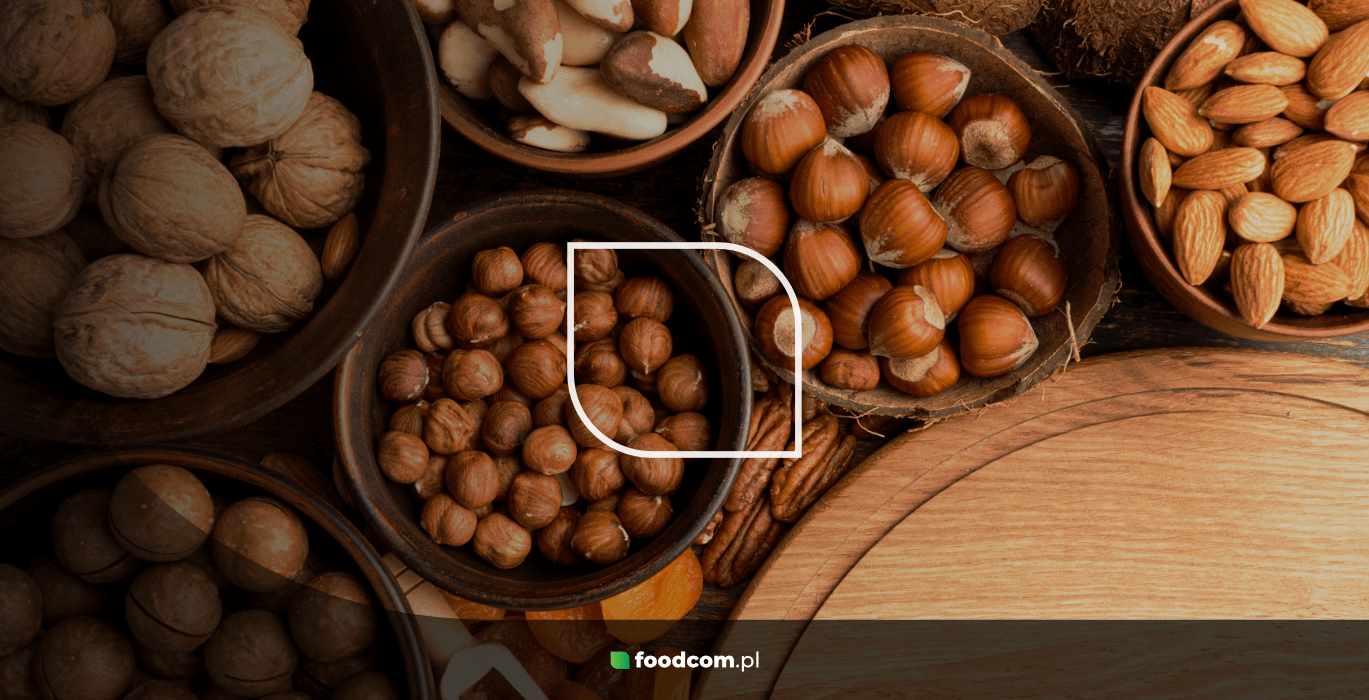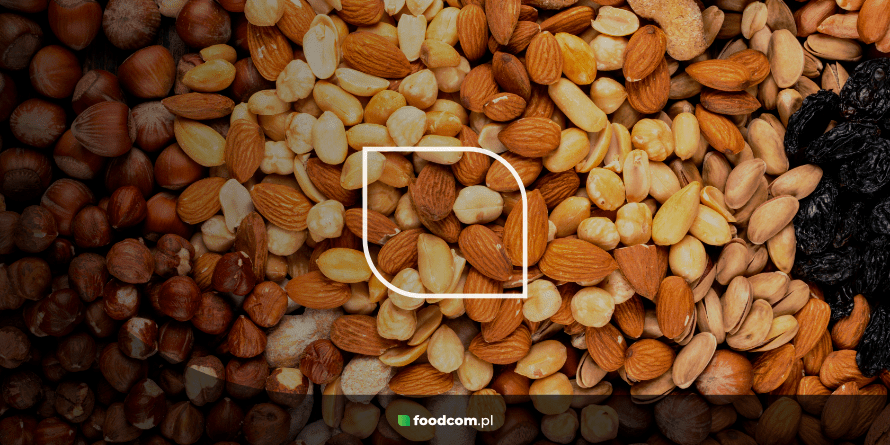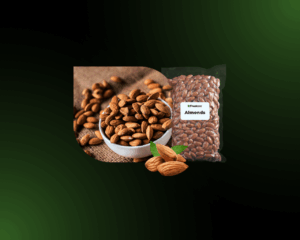- Nuts are a valuable source of nutrients, unsaturated fats, vitamins, and minerals.
- There are many types of edible nuts that differ in taste, properties, and use.
- Nuts are used both in the kitchen and in the production of cosmetics and supplements.
Nuts occupy a special place in the human diet. They have been prized for centuries for their nutritional properties, intense flavour and versatile use. They are not only a delicious snack but also an important ingredient in the cuisine of many cultures. In this article, we present the most important types of edible nuts and their use in business practice.
What are nuts?
Not all nuts as we know them are nuts from a botanical point of view. True nuts are a type of dry non-cracking fruit. We can include hazelnuts, acorns, chestnuts or pecans in this group.
In the kitchen, however, the term is much broader and encompasses a group of products that resemble true nuts and are similar in terms of nutritional properties (high in fat, protein and vitamins) and taste, regardless of the plant classification. For example, almonds, cashews, pine nuts or pistachios are seeds or pips from a botanical point of view, while peanuts are legumes.
Where are edible nuts used and what properties do they have?
All types of nuts are valued in the kitchen for their intense flavour, crunchiness and high nutritional value. They include:
- healthy fats – including mono- and polyunsaturated fatty acids, which support heart function and regulate lipid metabolism;
- plenty of vegetable protein – which is particularly important in balancing diets that exclude animal products;
- fibre – supports digestion and promotes a feeling of satiety;
- vitamins – especially vitamin B to support the nervous system, as well as vitamins E and K;
- minerals – such as magnesium, zinc, selenium, potassium, calcium and iron;
- antioxidants – to support the prevention of chronic diseases,
Nuts are used both as stand-alone snacks and as an ingredient in dishes and desserts. They can be used as a sprinkling on salads and sweet dishes. When ground, they can form nut flour and are also used to make nut pastes, vegetable milks and oils (also in cosmetics). They are used extensively in the production of sweets, snacks and healthy bars.
Types of edible nuts
Although, as already mentioned, the group of nuts is wide, there are several types on the market that reign supreme among producers and consumers of nut products. Let’s take a look at what the most well-known types of nuts are.
Almonds
Almonds are characterised by their delicate flavour, their high protein and antioxidant content and their wide range of uses – from the production of almond butter and vegetable milk, to additives in baked goods and sweets, to cosmetics. A variety of varieties can be found on the market, e.g. Nonpareil, Carmel, Butte, as well as almonds with varying degrees of roasting or processing.
Pistachios
Pistachios, especially the Iranian and Californian varieties, are highly valued in the catering and confectionery sector. They are distinguished by their intense colour, crunchiness and rich flavour profile. They are suitable both for processing (e.g. pistachio ice cream, pastes) and as a product offered in bulk. They are also used in desserts and Middle Eastern dishes.
Walnuts
Walnuts are one of the few plant sources of omega-3 fatty acids. Their form, crunchiness and slightly bitter taste make them often added to salads, cakes and mixed nuts. These nuts are prized for their supportive effects on brain function and their wealth of antioxidants.
Pecan nuts
Pecans are related to walnuts, but more sweet and tender than them. They are popular especially in American cuisine, such as in the famous ‘pecan pie’. They are a good source of manganese and zinc and help regulate blood sugar levels.
Brazil nuts
Brazil nuts stand out because of their very high content of thyroid-supporting selenium and their unique flavour. They are often used in premium products, healthy snacks and mixed nuts.
Cashew nuts
Cashew nuts are creamy and tender, distinguished by their mild, slightly sweet flavour. They are popular in Asian and vegan cuisine, including as a base for vegetable cheeses or sauces. They are relatively low in fat compared to other nut types, but contain a lot of magnesium, iron and zinc.
Hazelnuts
Hazelnuts are mild, crunchy nuts with a distinct flavour that are popular in European countries. They are known in particular for chocolate creams (e.g. Nutella) and pralines, but are also found in pastes, flours and oils – also in cosmetics, where they are valued for their richness in vitamin E and folic acid.
Macadamia
Macadamia nuts are creamy in texture and high in calories, which is linked to their extremely high fat content. They are used in luxury desserts and cosmetics (their oil has a moisturising and regenerating effect on the skin).
Groundnuts (peanuts)
Peanuts, also known as fistnuts, are most commonly used to make peanut butter and protein bars. They can also be found in nut mixes and as a stand-alone snack in various forms (shelled or unshelled, salted, roasted, coated…).
Pine nuts
Pine nuts are the edible seeds of the cones of certain pine species. They are small, light-coloured and have a delicate, slightly resinous taste. In Mediterranean cuisine, they are an indispensable ingredient in certain dishes, such as pesto alla genovese.
How do you choose the type of nuts for a specific use?
Nuts are an indispensable element in the activities of many food or cosmetic companies. Their wide variety – both in terms of types and uses – can be both an advantage and a pain. When choosing a particular type of nut, it is worth considering:
- the intended use,
- how a particular variety is stored,
- the form of the nut,
- origin and certification,
- seasonal availability and stability of supply,
- specific characteristics of the end-consumer group.
Knowing the different types of nuts and their characteristics allows not only to meet the needs of end consumers, but also to optimise costs and increase operational efficiency. A trusted nut wholesaler such as Foodcom, which can assist customers in personalising their offer and advising on the optimal nut varieties for their end use, can help with the selection.










